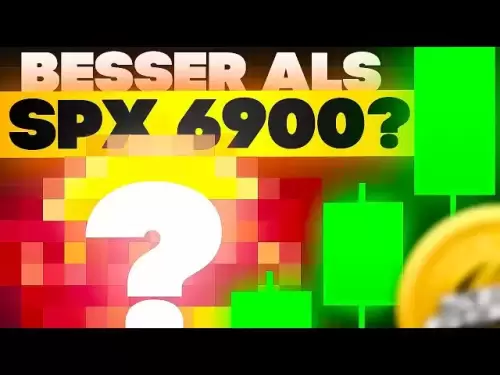-
 Bitcoin
Bitcoin $108,522.9936
0.51% -
 Ethereum
Ethereum $2,600.2119
2.25% -
 Tether USDt
Tether USDt $1.0001
0.00% -
 XRP
XRP $2.3065
1.88% -
 BNB
BNB $661.9093
0.34% -
 Solana
Solana $150.9961
1.40% -
 USDC
USDC $0.9999
0.00% -
 TRON
TRON $0.2877
0.21% -
 Dogecoin
Dogecoin $0.1708
1.78% -
 Cardano
Cardano $0.5863
1.70% -
 Hyperliquid
Hyperliquid $39.0718
4.52% -
 Bitcoin Cash
Bitcoin Cash $507.4600
2.09% -
 Sui
Sui $2.9070
2.06% -
 Chainlink
Chainlink $13.8666
4.64% -
 UNUS SED LEO
UNUS SED LEO $9.1277
0.82% -
 Stellar
Stellar $0.2624
5.86% -
 Avalanche
Avalanche $18.1961
2.40% -
 Shiba Inu
Shiba Inu $0.0...01182
1.77% -
 Toncoin
Toncoin $2.8141
2.42% -
 Hedera
Hedera $0.1611
3.70% -
 Litecoin
Litecoin $87.6537
1.88% -
 Monero
Monero $317.0356
0.02% -
 Polkadot
Polkadot $3.4327
2.63% -
 Dai
Dai $1.0000
-0.01% -
 Ethena USDe
Ethena USDe $1.0006
0.05% -
 Bitget Token
Bitget Token $4.3043
0.50% -
 Uniswap
Uniswap $7.6006
2.93% -
 Aave
Aave $293.0019
4.60% -
 Pepe
Pepe $0.0...01007
3.08% -
 Pi
Pi $0.4658
2.42%
Ledger transaction pending for a long time
A pending Ledger transaction usually results from network congestion, low gas fees, or nonce issues, but funds remain safe until confirmed.
Jul 09, 2025 at 07:07 pm
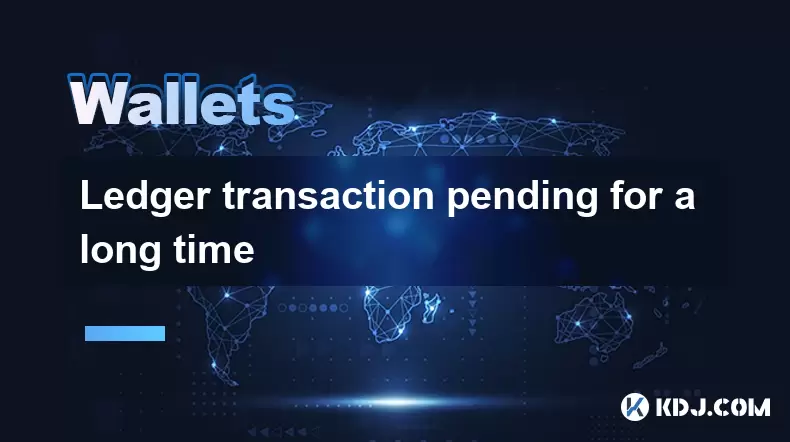
Understanding Why a Ledger Transaction Might Be Pending
When using a Ledger hardware wallet, users occasionally encounter situations where their transaction remains in a "pending" state for an extended period. This typically occurs when the blockchain network is congested or when the transaction fee (gas price) set by the user is too low to incentivize miners or validators to process it quickly.
The first thing to understand is that a pending transaction does not necessarily mean something went wrong. It simply means the transaction has been broadcast to the network but hasn’t yet been included in a block. The blockchain's decentralized nature means transactions must be verified and confirmed by multiple nodes, which can take time depending on various factors.
How to Check the Status of a Pending Ledger Transaction
To verify whether your transaction is still pending, you can use a blockchain explorer corresponding to the network you used (e.g., Etherscan for Ethereum-based tokens). Follow these steps:
- Open the Ledger Live app and navigate to the relevant account.
- Locate the transaction in question and click on it.
- Copy the transaction hash (TXID) provided.
- Paste the hash into the search bar of the appropriate blockchain explorer (e.g., Etherscan.io).
- Review the status: if it says “Pending,” the transaction is still waiting to be confirmed.
It’s important to note that some explorers may show a pending transaction as having zero confirmations. This doesn’t indicate failure; rather, it shows that the network has not yet validated it.
Factors That Contribute to Long Pending Times
Several key elements influence how long a transaction stays in a pending state:
- Network congestion: During high-traffic periods, such as during an NFT drop or major market movement, blockchain networks become overloaded with transactions. As a result, lower-priority transactions are delayed.
- Gas fees: If you selected a low gas price, miners or validators may prioritize other transactions offering higher fees. This is especially true on Ethereum and Binance Smart Chain.
- Nonce issues: Each transaction requires a unique nonce—a sequential number assigned to each outgoing transaction from your address. If a prior transaction is stuck, subsequent ones will also remain pending until the earlier one is resolved.
- Wallet software delays: Occasionally, Ledger Live or the connected application might experience syncing issues that delay transaction propagation across the network.
By identifying which of these factors applies to your situation, you can better determine how to resolve the issue.
How to Speed Up or Cancel a Pending Transaction
If your transaction is taking too long, there are ways to either speed it up or cancel it altogether, depending on the blockchain you're using:
- For Ethereum-based transactions, you can use a Replace-by-Fee (RBF) strategy:
- Reopen the sending interface in your wallet.
- Use the same nonce as the pending transaction.
- Increase the gas fee significantly to encourage faster processing.
- Alternatively, you can send a 0 ETH transaction with the same nonce and a higher gas fee. This effectively cancels the original transaction by replacing it.
- On Bitcoin, you can use Child-Pays-for-Parent (CPFP) or RBF if enabled during the original transaction creation.
- Ensure that your Ledger firmware and apps are updated to avoid compatibility issues that could affect transaction handling.
Always double-check the nonce value before submitting any replacement transaction. Incorrect nonce usage can lead to further complications.
Preventive Measures for Future Transactions
To minimize the chances of encountering prolonged pending times in the future, consider implementing these best practices:
- Always review the recommended gas fees before confirming a transaction. Most wallets, including Ledger Live, offer dynamic suggestions based on current network conditions.
- In high-priority cases, manually increase the gas price slightly above the average to ensure faster confirmation.
- Keep your Ledger firmware and apps updated to benefit from performance improvements and bug fixes.
- Avoid sending multiple transactions rapidly from the same address without allowing previous ones to clear, as this can cause nonce conflicts.
- Familiarize yourself with tools like Etherscan or Blockchair so you can monitor transactions independently of your wallet interface.
Taking these precautions helps ensure smoother interactions with blockchain networks and reduces frustration caused by pending transactions.
Frequently Asked Questions
Q: Can I lose funds if a transaction stays pending for too long?
A: No, funds are not lost while a transaction is pending. They remain in your wallet and will only be deducted once the transaction is successfully confirmed.
Q: How long can a transaction stay pending on the Ethereum network?
A: There’s no fixed limit. Some transactions get confirmed within minutes, while others may remain pending for hours or even days, especially if the gas price is very low.
Q: Does Ledger support Replace-by-Fee (RBF) natively?
A: Ledger itself does not directly implement RBF, but you can manually replace a transaction by resubmitting it with a higher gas price through compatible wallets or interfaces.
Q: What should I do if my transaction disappears from Ledger Live but still doesn't appear on the blockchain?
A: This usually indicates a synchronization issue. Try restarting Ledger Live, switching networks, or checking the transaction status via a blockchain explorer using the transaction hash.
Disclaimer:info@kdj.com
The information provided is not trading advice. kdj.com does not assume any responsibility for any investments made based on the information provided in this article. Cryptocurrencies are highly volatile and it is highly recommended that you invest with caution after thorough research!
If you believe that the content used on this website infringes your copyright, please contact us immediately (info@kdj.com) and we will delete it promptly.
- NEXBRIDGE, NEXPLACE, and the Bitcoin Ecosystem: Building a New Financial Frontier
- 2025-07-09 23:10:13
- MEXC Launchpad & PUMP Token: Grab a 40% Discount?
- 2025-07-09 22:50:12
- Trade System Revolution: How XDC and the End of Faxes Are Reshaping Finance
- 2025-07-09 23:10:13
- No Rs 50 Coin? Delhi HC Hears Why India Prefers Banknotes
- 2025-07-09 23:15:11
- Circle, Stablecoin, OKX Partnership: A New Era for Digital Dollars?
- 2025-07-09 22:30:13
- TRD AI, DePin Network, and Decentralized Computing: A New Era?
- 2025-07-09 22:30:13
Related knowledge

How to find a specific receiving address on my Trezor
Jul 09,2025 at 10:36pm
Understanding the Purpose of a Receiving AddressA receiving address is a unique identifier used in blockchain networks to receive cryptocurrency. Each...

How to connect Trezor to Rabby wallet
Jul 09,2025 at 05:49am
What Is Trezor and Rabby Wallet?Trezor is a hardware wallet developed by SatoshiLabs that allows users to securely store their cryptocurrency assets o...
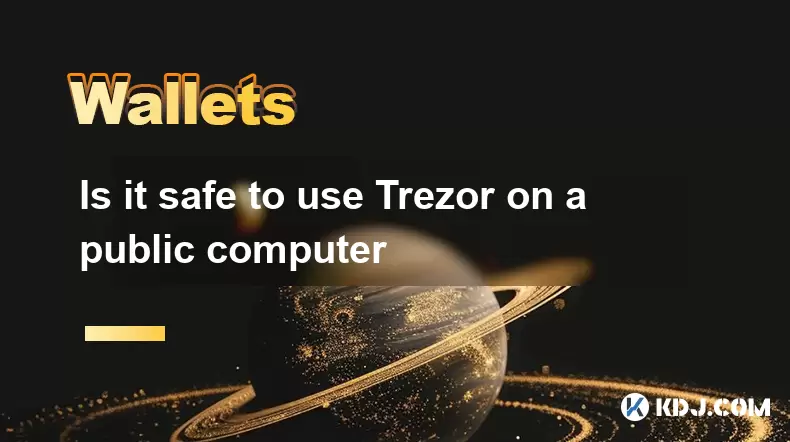
Is it safe to use Trezor on a public computer
Jul 09,2025 at 08:56pm
Understanding the Risks of Using Trezor on a Public ComputerUsing a Trezor hardware wallet is generally considered one of the most secure methods for ...

What happens if I forget my Trezor passphrase
Jul 09,2025 at 03:15am
Understanding the Role of a Trezor PassphraseIf you use a Trezor hardware wallet, you may have set up a passphrase as an extra layer of security beyon...
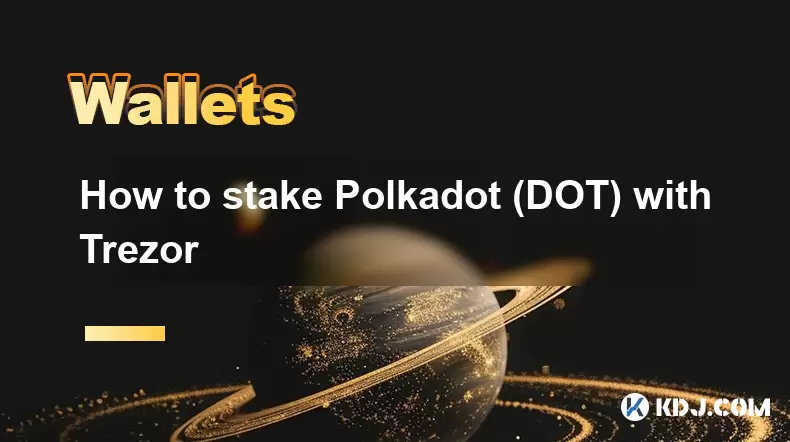
How to stake Polkadot (DOT) with Trezor
Jul 09,2025 at 09:42pm
Understanding Polkadot (DOT) StakingStaking Polkadot (DOT) allows users to participate in network validation and earn rewards. Unlike traditional proo...
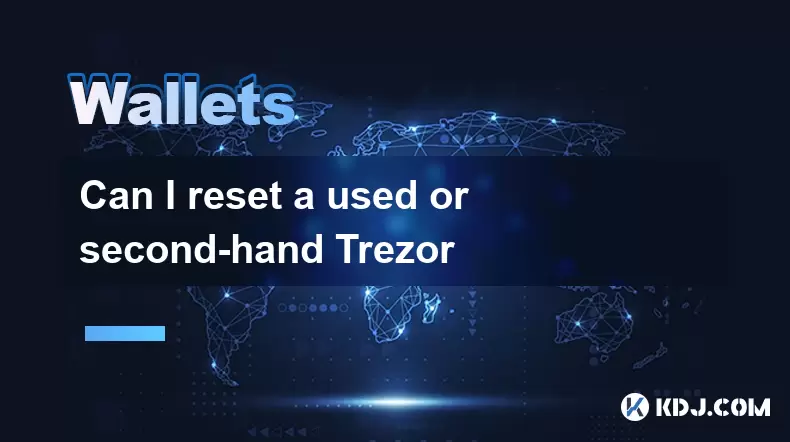
Can I reset a used or second-hand Trezor
Jul 09,2025 at 11:49am
Understanding the Reset Process for a Used or Second-Hand TrezorIf you have acquired a used or second-hand Trezor wallet, one of the first things you ...

How to find a specific receiving address on my Trezor
Jul 09,2025 at 10:36pm
Understanding the Purpose of a Receiving AddressA receiving address is a unique identifier used in blockchain networks to receive cryptocurrency. Each...

How to connect Trezor to Rabby wallet
Jul 09,2025 at 05:49am
What Is Trezor and Rabby Wallet?Trezor is a hardware wallet developed by SatoshiLabs that allows users to securely store their cryptocurrency assets o...

Is it safe to use Trezor on a public computer
Jul 09,2025 at 08:56pm
Understanding the Risks of Using Trezor on a Public ComputerUsing a Trezor hardware wallet is generally considered one of the most secure methods for ...

What happens if I forget my Trezor passphrase
Jul 09,2025 at 03:15am
Understanding the Role of a Trezor PassphraseIf you use a Trezor hardware wallet, you may have set up a passphrase as an extra layer of security beyon...

How to stake Polkadot (DOT) with Trezor
Jul 09,2025 at 09:42pm
Understanding Polkadot (DOT) StakingStaking Polkadot (DOT) allows users to participate in network validation and earn rewards. Unlike traditional proo...

Can I reset a used or second-hand Trezor
Jul 09,2025 at 11:49am
Understanding the Reset Process for a Used or Second-Hand TrezorIf you have acquired a used or second-hand Trezor wallet, one of the first things you ...
See all articles























